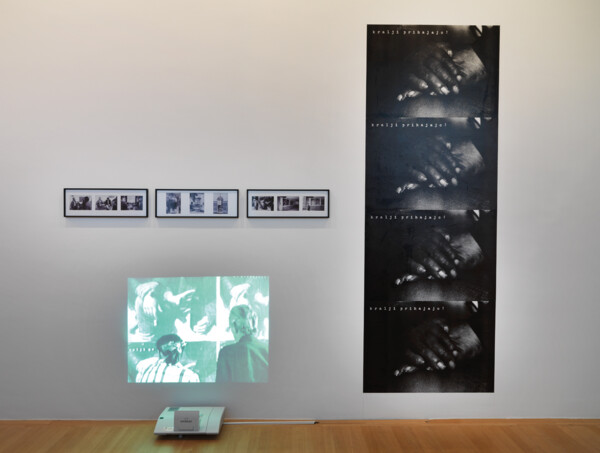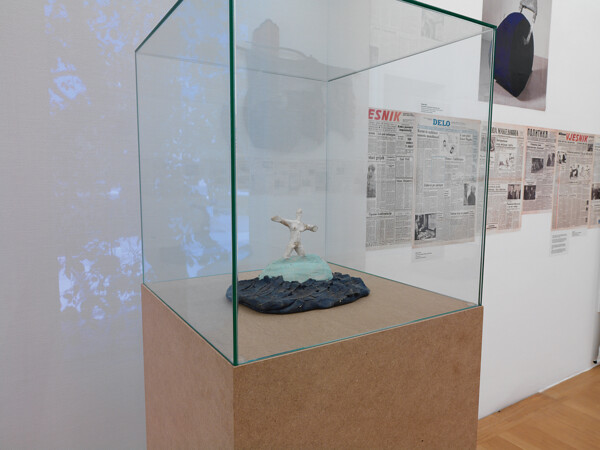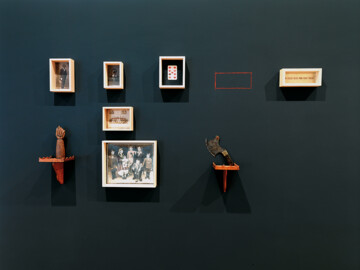Interdependence is a mutual dependence between things, and it’s often used to describe complex systems. In biology there is a great deal of interdependence between plants and animals which varies from: “commensalism” (when one of two different organisms receive benefits from the other without damage), “parasitism” (when one of two different organisms benefits from the other by causing damage to the other), “symbiosis” (when both of two different organisms benefit from each other without any damage), “reciprocality” (a relation of mutual dependence or action or influence), “sharing” (using or enjoying something jointly with others), “trophobiosis” (a symbiotic relation in which one organism protects the other in return for some kind of food product).
In organisational structures there are four levels of interdependence: “pooled interdependence” (a low level of interdependence and conflict while drawing resources from a shared source), “sequential interdependence” (the output of one unit becomes the input for another unit), “reciprocal interdependence” (a network of two-way relationships), “comprehensive interdependence” (a high-level organisational structure based on combination of other levels of interdependence).
The art system is a complex system. Its integral part consists primarily of artists and their works and activities. This is followed by spaces of presentation (exhibition spaces from non-profit galleries and centres to spaces of the Kunsthalle-type and museums), systems of interpretation (curators, theorists, critics), education (pedagogic and andragogic programmes, publishing, symposia, conferences), the art market (commercial galleries, art fairs, auction houses, collectors), collections (private and public), and, last but not least, sources of funding (public and private).
The product-driven society, which is mirrored in the art system, results in art that is created for the market, and then judged and traded just like stocks. Caught in the vice of the market – with its “laws” of supply and demand – and production, art becomes adapted to the desires and tastes of buyers, collectors, and commercial galleries, all trying to cash in on the popularity of a certain trend or artist. This may compromise the quality of art, as in many cases ethics is replaced by aesthetics, content by taste, and quality by quantity.
One of the oldest and the most developed organisational structures of the art system is a museum. The basis for the professional working of a museum – collection policy, programming and exhibition activities, public communications, publishing, education, and marketing – is a coherently conceived vision. But today, when museums seem to focus principally on ways and means of marketing their collections and collection-related content, it is necessary to be aware of the dangers of marketing-based approaches in the conception of museum polices. I’ll call such collections and their host institutions “product-based” museums.
Comparing the usage of the term “interdependence” in biology, sociology and management theory, it (paradoxically) seems there is a stronger → humanist tone in the biological use of the term than in any other. In the context of art systems, the term stems from the marked distinction between “product-“ and “project-based” art, and it follows that there are “project-based” institutions as well. I could argue that one of the founding institutions of the L'Internationale +MSUM (Museum of Contemporary Art Ljubljana) based around its forward thinking ArtEast 2000+ International Collection of Central and East European art is an example of a project-based institution. However, I will present a few other examples on a much smaller scale. I’m talking of the role that is played by artists’ museums with their own collections in the countries of ex-Yugoslavia.
Already in the past, more progressive artists critically assessed the institutions, trying to co-create some general guidelines for the future with their knowledge and experience of various models of art systems and art institutions. For the most part, their suggestions concerning the restructuring of institutions went unheeded. This induced a number of artists to use ideas that emerged from their critique of institutions as platforms for the foundation of their own “private” institutions. These ranged from galleries and artist-run spaces, to art collections, museums, associations, institutes, and other organisations for the production and presentation of art.
These project-based collections and artist-run museums already started appearing in Yugoslavia in the 1970s, but they proliferated during and after the breakup of the Yugoslav Federation (1991–2001). Let us look at some examples:

Figure 1: Vladimir Dodig Trokut, “Anti-museum”, a part of The Heritage of 1989. Case Study: The Second Yugoslav Documents Exhibition, exhibition view, 26 April – 17 September 2017. Courtesy of Moderna galerija.
Vladimir Dodig Trokut’s Anti-museum was established as an idea in 1968, and registered as intellectual property, knowledge transfer, patent and innovation in 1972. It is a collection which now consists of over 500,000 artefacts and has been displaced to more than 35 sites in Croatia and a smaller part is also abroad. This Anti-museum is a dynamic museum, a museum without walls, a museum for the everyday, with 176 registered names of storage units and collections. Since 1981, the collection was protected as a cultural monument and put on the register of national treasures. In 2010 Trokut combined all the spaces in one name: the Anti-museum of Croatia. (Figure 1)
The Inner Museum of Dragan Papić is a “simulated institution” created as a collection of memories from the socialist and → postsocialist past. The process of collection, which was established in 1976, ran in parallel with Papić’s other art projects. Located in Belgrade, in the artist’s flat The Inner Museum takes the form of a collection of curiosities and an archaeology of the rubbish dump to be a laboratory and a space of communication for the observation of personal and collective memory. In 2007, the artist closed the doors of the museum to the public. In October 2010, the museum was listed as a site of cultural significance in the territory of Belgrade.

Figure 2: Tadej Pogačar & the P.A.R.A.S.I.T.E. Museum of Contemporary Art: Hills and Valleys and Mineral Resources, exhibition view, 4 November 2014 – 8 February 2015. Courtesy of Moderna galerija.
P.A.R.A.S.I.T.E. Museum of Contemporary Art was founded by Tadej Pogačar in 1990 as a museum of contemporary art, and in 1993 it was renamed as the P.A.R.A.S.I.T.E. Museum of Contemporary Art. Its operation is oriented on the analysis and deconstruction of the symbolic centres of power and the search for parallel models of cultural, economic and social operation. The P.A.R.A.S.I.T.E. Museum establishes inter-specific relations with institutions and social groups in order to enforce changes in their operation. It takes over territories, chooses spaces, interrupts relations and gets fed by the juices of institutions. It is a mobile organism and critical model, which takes over only the exterior form and name of the related cultural institution. (Figure 2)
Artists’ museums appeared in all ex-Yugoslav republics, but majority appeared in Serbia, where the feeling of the loss of the Federation was arguably the strongest. Serbia was also the republic where the → residual elements of Yugoslavia (its name, state institutions, laws and currency) stayed in power the longest.
The Metaphysical Museum was founded in 1995 and is located in the studio and wherever the work of Nenad Bračić, artist and founder of the museum, is presented and exhibited. Bračić publishes a column The Contributions to the Metaphysical Museum in the journal Beorama, and by doing so introduces a daily cleansing of thinking about art. The entire production of the artist is presented under the name of The Metaphysical Museum.

Figure 3: Mađan Bajić, “The Yugomuseum”, a part of The Heritage of 1989. Case Study: The Second Yugoslav Documents Exhibition, exhibition view, 26 April – 17 September 2017. Courtesy of Moderna galerija.
The Yugomuseum was established by the artist Mađan Bajić in 1998, but it is incomplete, unopened and partially accessible to the public only by appointment with MoCA, Belgrade; MCA Vojvodina; Depot. It is also available online (www.yugomuzej.com). The Yugomuseum has over 300 exhibits. It was first introduced to the public in 1999, and set up as a result of the violence and heavy historical circumstances during the late 1990s. (Figure 3)
Kunsthistorisches Mausoleum is located in Belgrade and was founded and opened to the public for the first time in 2003. Named after Vienna’s Kunsthistorisches Museum, the Kunsthistorisches Mausoleum is in fact the Tomb of Art History. It is the place where two art histories are buried. One chamber confines “The History of Modern Painting” by Herbert Read, while another “The History of Art” by H. W. Janson. Art histories are written narratives based on previously existing art works and artefacts. In the case of the Mausoleum, it is the narrative that came first and the artefacts were produced after the story. Illustrations from both books are in the Mausoleum turned into the “real” paintings.
The Rabbit Museum was founded in 2006 by the artist Nikola Džafo. In accordance with the principles of museology, the exhibits were sorted into ten collections, and for the purposes of classification a book inventory was established. Today The Rabbit Museum has around 2,000 exhibits and is → stealing the living space from around its owners.
The Museum of Childhood project was started in 2006 by the artist Vladimir Perić, who was later joined by Milica Perić, an art historian and curator. The project was conceived as having a ten-year duration. The Museum of Childhood doesn’t have a fixed address where it is open to the public, but is instead presented via a series of solo and group exhibitions, presentations and lectures. The collection has hundreds of thousands of items, systematised into five areas of childhood and numerous sub-categories. The number of objects is continuously growing, because the collecting of objects by purchase from flea markets takes place at least once a week.
Most of these “parallel” art spaces started to appear at the same time as the visions and programmes of national institutions were being transformed. With the introduction of new legal and economic frameworks in the new countries of ex-Yugoslavia, the formalisation of existing and newly established art spaces and organisations became possible. In the 1990s, during the so-called “transition” period, the art systems of many of the → postsocialist countries had to re-establish, reorganise, and redefine their cultural policies. Consequently, some artists became involved, at least for a while, in transforming their institutional frameworks. Some became active participants in the system they used to observe and critique, while others established their own museums, galleries and project spaces, and → archives, or constructed entire parallel historical narratives.
In contrast to public museums and galleries, these institutions and projects are about creating a space of personalised memory and multiple authorship which does not depending on global art historical narratives, and often operates outside the demands of the art market. All of these museums are deeply personal, even sentimental, conceptual and in most cases possess no market value. Some of them are in line with other projects by artists who practice within the field of institutional critique, and others are one-off projects.
Nowadays contemporary art museums are for the most part aspiring to become significant sites on the map of entertainment and pleasure, of leisure-time activities, and indirectly, tourism. Consequently, they (more often than not) adopt a modus operandi that is organised and promoted more as a leisure-time facility, with stores, bars, restaurants, and areas for lounging. Museums are becoming more and more like shopping malls, and the content they present is increasingly subject to the logic of the market.
As many art institutions have in the past largely internalised institutional critiques, embracing the artists’ suggestions and projects, we are now (again) at the point of wondering about the inner workings and future development of museums and galleries. Can we foresee the potential for a future, based on “symbiosis”, “sharing” and “commensalism” (rather than “commercialism”) between public museums and artist-run museums in the region and abroad?





